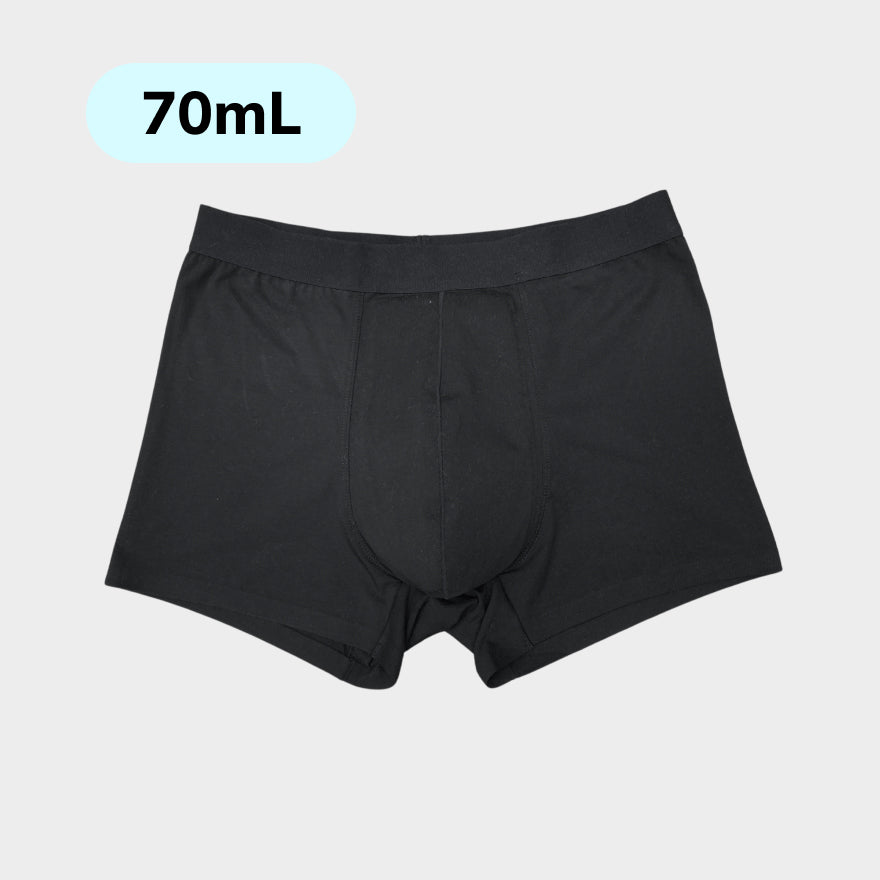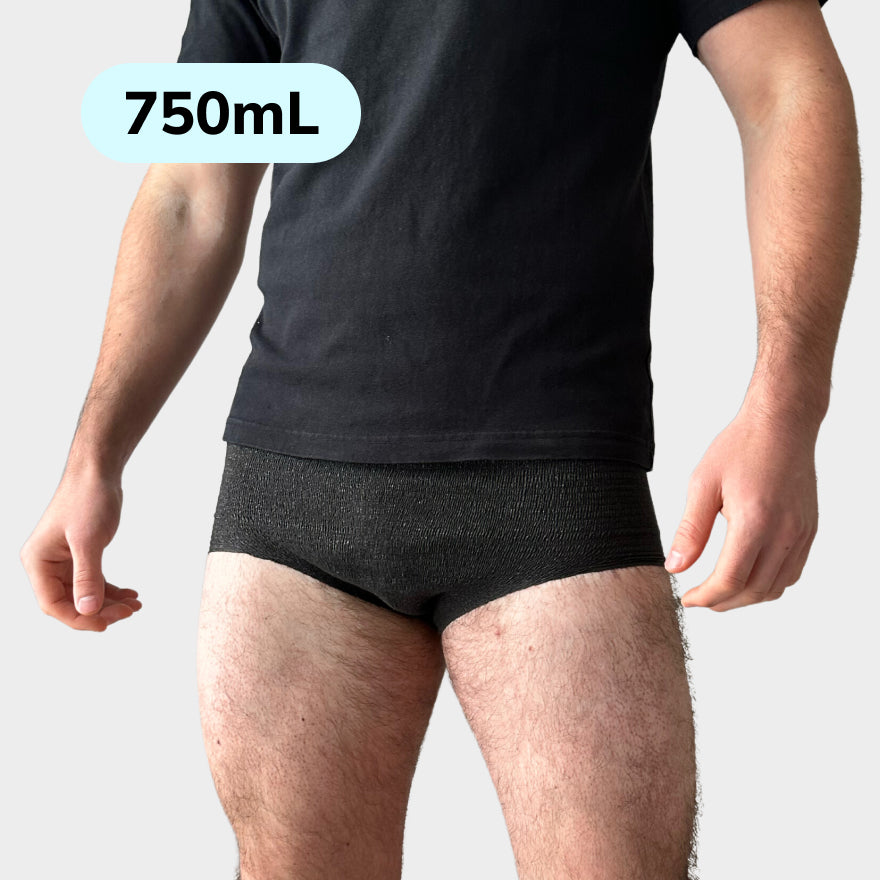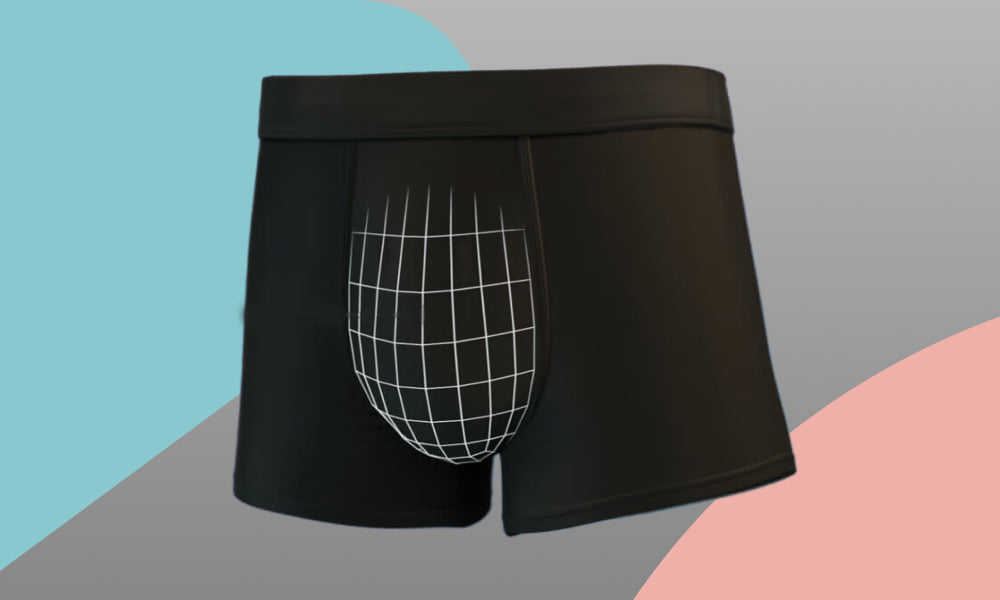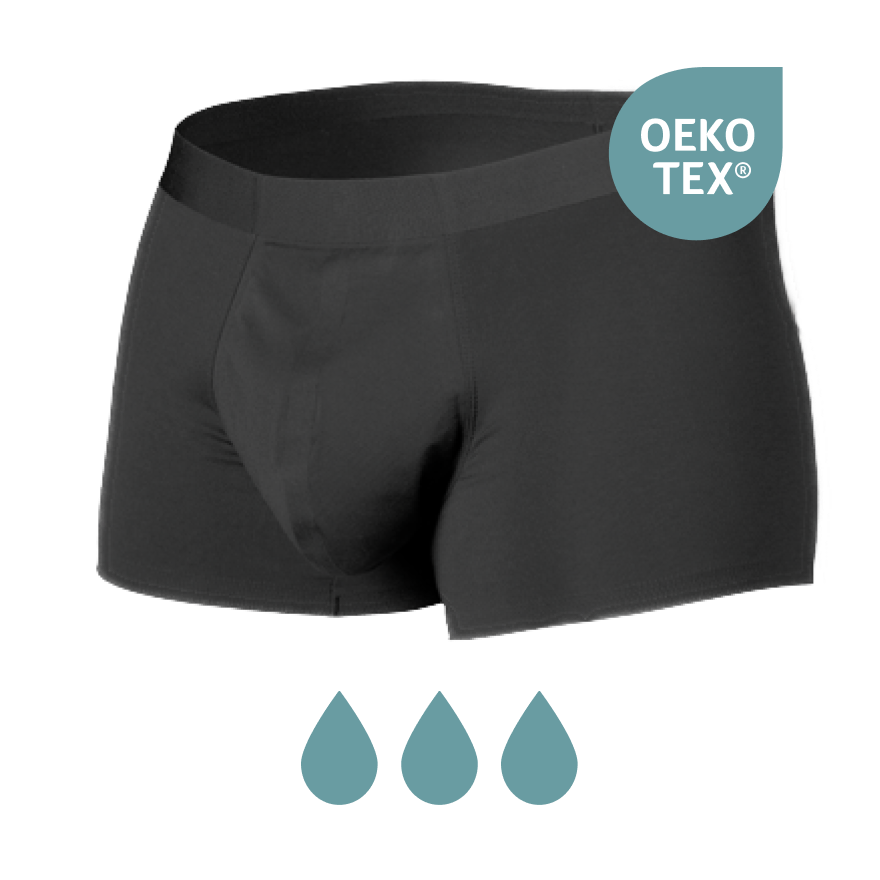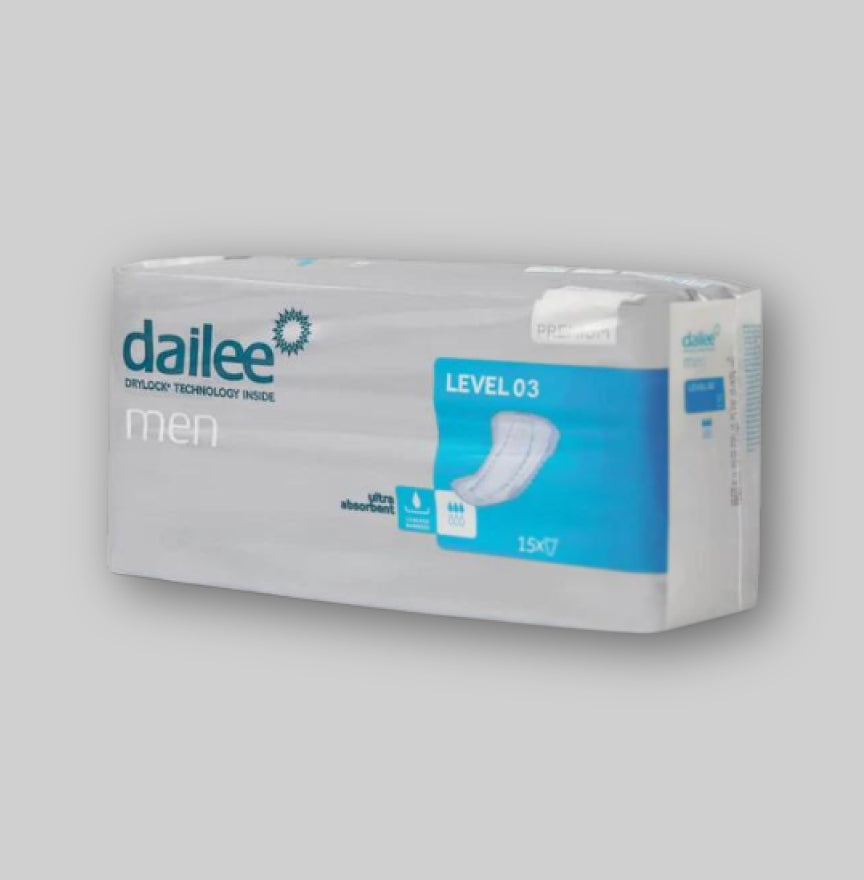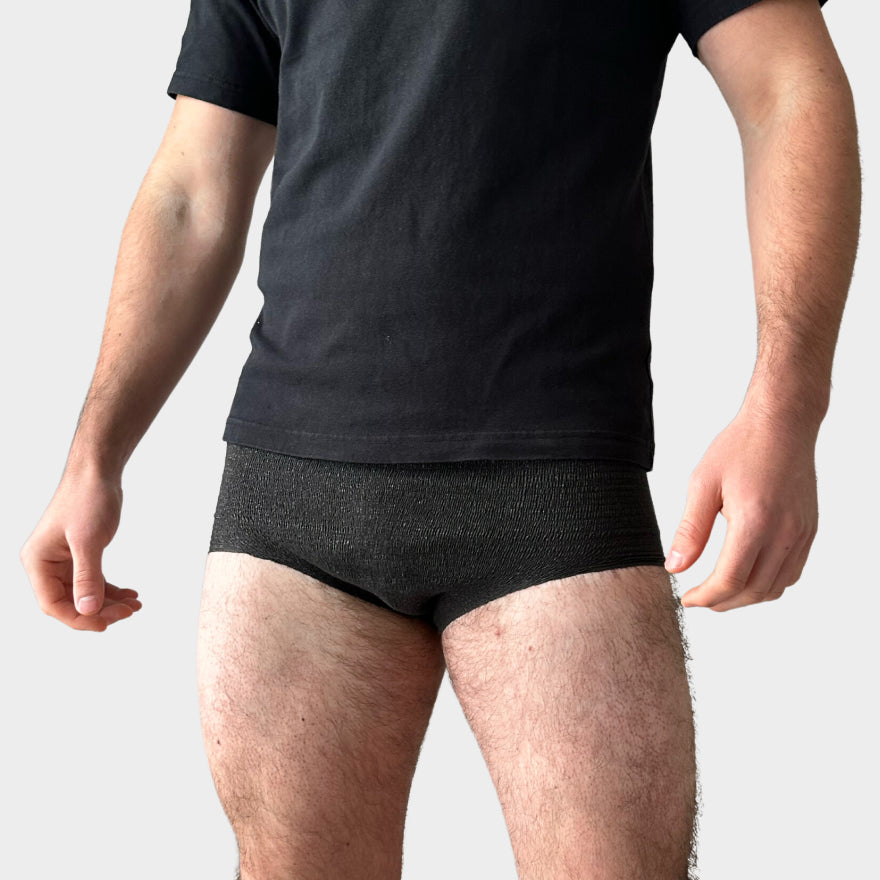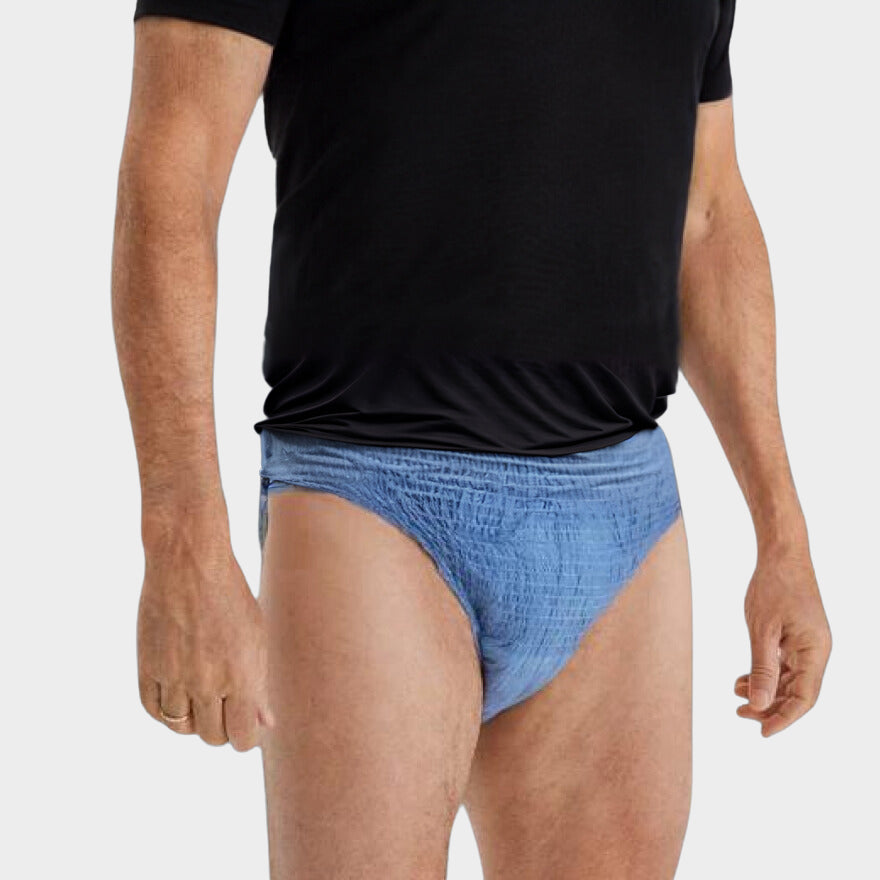Incontinence in the elderly is an important topic that requires considerable attention in health care. It refers to the involuntary excretion of urine or stool, which can result in social and hygienic problems for the affected individuals. Different causes contribute to incontinence, such as changes in the body due to the aging process, including weakened pelvic floor muscles and disorders such as nerve damage or prostate problems.

The impact of incontinence on the quality of life of the elderly cannot be underestimated. It can lead to emotional stress, social isolation and a reduced sense of well -being. Nevertheless, it remains a treatable condition - open communication With care providers and an adequate diagnosis are crucial steps in controlling the symptoms.
For healthcare professionals it is important to have insight into both the physical and the psychological consequences of incontinence. A good understanding of the available treatment processes and preventive strategies, such as Strengthening the pelvic flooris essential. Effective control and treatment can significantly improve the quality of life for the elderly and relieve the burden of incontinence.
Definition of incontinence in the elderly
Incontinence in the elderly refers to it inability to voluntarily check urine or stools, which results in unintentionally loss. The condition knows different forms, under which:
- Urinary incontinence: This type concerns the involuntary loss of urine and can vary from slightly dripping to full emptying of the bladder.
- Faecal incontinence: This concerns the unintended loss of fixed or liquid stools.
- Anal incontinence: Fecal incontinence combined with the unintended loss of flatulence.
Incontinence in the elderly can have various causes, including age -related changes in the bladder or pelvic floor, neurological disorders, mobility issues and obstructions. It often has significant psychosocial implications, such as feelings of shame and a reduced quality of life.
Factors that contribute to the development of incontinence include:
- Reduced bladder capacity
- Urinary tract infections
- Use of medication
- Physical limitations that hinder timely toilet corridor
Incontinence in the elderly is often associated with reduced mobility and the ability to go to the toilet independently. It is more common among the elderly who live in nursing homes than with independently living seniors. Adequate managing of this condition requires a combined approach to medical intervention and support.
Epidemiology of incontinence in elderly care

Incontinence in the elderly is a considerable health problem within elderly care. The epidemiological data reveals the size and impact of this condition among the older population.
Prevalence
The prevalence From incontinence in the elderly is high. Studies show that about half of the elderly in care institutions have to do with urinary incontinence to a certain extent. This percentage can vary depending on the health status and living conditions of the elderly. Factors such as mobility problems, chronic conditions, and certain drugs can increase the risk of incontinence.
Incidence
The incidence New cases of incontinence in the elderly also appears to be significant. The number of elderly people who develop new symptoms of incontinence every year increases as the population is aging. This means the need for adequate preventive measures and treatments. Timely identifying and tackling provoking factors can significantly improve the quality of life for many elderly people.
Causes of incontinence in the elderly
Incontinence in the elderly can be caused by a variety of factors, whereby the causes can be subdivided into physiological, psychological and external factors.
Physiological factors
Physiological changes play a crucial role in the development of incontinence in aging. Weakening of the pelvic floor muscles and damage to support tissue are prominent causes. Damage to the bladder, intestines or other organs can also lead to incontinence problems. Diseases such as diabetes and neurological disorders such as Parkinson's disease can also contribute to incontinence complaints in the elderly. Visit Care for better For more details about physiological causes.
Psychological factors
Psychological aspects are less often the direct cause of incontinence, but can indeed play a role. For example, stress and anxiety can lead to increased urge and frequent toilet visits, which can worsen incontinence.
External factors
Lifestyle choices and environmental factors also influence the chance of incontinence. Overweight and smoking, for example, can lead to incontinence complaints due to increased pressure on the bladder and pelvic floor. Medicine use can also have side effects that cause or worsen incontinence. For an overview of external causes, see the information offered by Abena Healthcare.
Typing Incontinence

Incontinence in the elderly has different forms where control over the bladder or intestinal function decreases. These conditions entail challenges that require specific attention.
Urinary incontinence
Urine incontinence in the elderly is characterized by the unwanted loss of urine. There are several forms of urinary incontinence, of which incontinence, where one has a sudden strong urge to urinate, is common in the elderly. Other forms are:
- Stress incontinence: loss of urine for pressure -increasing moments such as coughing or sneezing.
- Overflow incontinence: Due to a disturbed bladder function or an obstruction, urine is released undesirably.
This problem can be caused by various factors, including old age diseases or reduced mobility.
Faecal incontinence
Fecal incontinence refers to the loss of control over the intestines, which can lead to unintended loss of stool. It may be due to:
- Reduced effect of the sphincter
- Damage to nerves as a result of disease processes such as diabetes
- Physical limitations that hinder a timely toilet
It handling faecal incontinence depends on the underlying cause and can vary from dietary changes to medical interventions.
Diagnostics

The diagnosis of urinary incontinence in the elderly requires a structured approach, with attention to various aspects of health and daily life of the patient.
Anamnesis
They start with one thorough history in which the patient describes his or her complaints. It is important to gain insight into the species and severity of the incontinence, as well as its influence on the quality of life. Collecting information about the toilet is essential for the diagnostics.
Physical examination
During it physical examination There is a search for physical causes of incontinence. This can include things such as weakness of the pelvic floor muscles or prostate enlargement. The research plays a crucial role in it treatment plan.
Additional research
Additional research Can consist of a urine sample for a urine stick, to exclude a possible urinary tract infection, and can also include an ultrasound of the bladder to assess the bladder function. For detailed information, the guidelines consult.
Treatments
In the treatment of incontinence in the elderly, various approaches are possible depending on the cause and severity of the symptoms. These treatment methods range from conservative approaches to surgical procedures.
Conservative treatment
Conservative treatment is the first step and often includes Lifestyle changes and pelvic floor therapy. Measures such as reducing the intake of caffeine and alcohol, regular toilet visits and pelvic floor exercises can already cause significant improvements. Aids such as incontinence paths can also offer support.
Drug treatment
When conservative measures are insufficient, one can proceed to drug treatment. This means the use of medicines that can improve bladder function. Anticholinergics, for example, reduce bladder contractions which can help with urge incontinence.
Surgical
In certain cases where conservative or drug treatments are not sufficient, a surgical procedure can be considered. Surgical methods such as a winding operation can restore control over the urine stream in the event of stress incontinence.
Preventive measures

Various measures are important to prevent incontinence in the elderly. First of all, awareness plays an essential role. Care providers and caregivers can support the elderly by guiding them to the toilet in time, which contributes to it Preventing incontinence.
Regular exercise
Physical activity, including pelvic floor exercises, helps to strengthen the muscles involved in continency. Exercises on a regular basis are essential for maintaining good bladder function and intestinal health.
-
Diet
Adjustments in food can also contribute to prevention. It is advisable to take food that promotes bowel movements and to avoid dehydration, because this can affect the urinary tract. -
Medication management
Careful medication management is crucial, since some medicines have side effects that can cause or worsen incontinence. Doctors must be aware of this and consider alternatives if necessary, as discussed in a article about urine incontinence.
Accessibility and safety at home
Removing obstacles in the home can help to maintain independence, making the elderly reach the toilet more easily and in time.
In the field of care provision, it is important to remove misunderstandings. Incontinence is not inevitable when aging, and Unnecessary incontinence can often be prevented. Through an integrated approach and good communication, the quality of life for the elderly can be considerably improved.
Impact on the quality of life
Incontinence in the elderly often has a significant impact on quality of life. Those who suffer from urinary incontinence can experience various psychosocial problems, such as:
- Reduces self -confidence: The inability to check urine loss can cause shame feelings and affect the self -esteem.
- Social isolation: People can avoid social activities for fear of accidents, which can lead to loneliness and insulation.
- Emotional stress: Fear of visible signs of incontinence can cause constant stress and worries.
- Physical discomfort: Skin irritations or infections can be caused by the constant exposure to moisture.
- Restriction in daily activities: One can become less mobile and experience limitations in daily activities and hobbies.
In combination with underlying health problems, which often occur in the elderly, urine incontinence can lead to one loss of functionality And self -reliance.
There are positive findings about the treatment of urinary incontinence, which can result in better quality of life. It is therefore important that the elderly and caregivers do not proactively approach the subject and do not avoid treatment. Open communication and appropriate care are crucial to the Great impact on the quality of life to reduce the elderly.
Socio-economic consequences

Incontinence in the elderly leads to various socio-economic challenges. The elderly can be ashamed of their condition, which influences them social interactions and self -image. According to an insight from Abena Healthcare Some elderly people can become rebellious or even feel victim because of incontinence. This can lead to a decrease in social activities and an increased risk of insulation.
The cost There are another point of care for incontinence products such as diapers and protective bed coverings. For some elderly people or their families, these costs can financial burden forms. This not only concerns direct costs, but also the possible costs arising from additional care and treatments.
In addition, incontinence can increase the need for professional care. It may be necessary that informal carers have to spend more time on healthcare, which can influence their ability to work and have indirect economic effects.
In addition, incontinence has an impact on healthcare institutions. Healthcare staff must spend more time on care for incontinent elderly people, which increases their workload. This emphasizes the Guideline database When discussing incontinence in vulnerable elderly people. The total healthcare costs therefore increase as a result of incontinence in both home care situations and in residential care environments.
Support and care

Healthcare providers play an essential role in supporting the elderly with incontinence. A individualized care plan Is crucial, where attention is paid to both physical and emotional aspects of incontinence.
- Personal Hygiene: Advising on and realizing the right skin care Is important to prevent skin problems.
- Incontinence material: A selection of appropriate incontinence material Can help maintain comfort and dignity.
- Toiletoutines: Encourage regular toilet routins and using the toilet can help to control incontinence.
- Pelvic floor therapy: In certain cases, the pelvic floor muscles contribute to improving continence.
Professionals must also take into account possible underlying conditions, such as a overactive bladderthat can be treated. Tackling these disorders can reduce symptoms of incontinence.
Education for caregivers and family members also plays an important role. They must be sufficiently informed and supported in order to be able to take care of their loved ones. Through cooperation and communication you can offer the best care and support to the elderly with incontinence.
Future prospects and innovations

In the care of the elderly with incontinence, future prospects and innovations are essential to improve the quality of life. New research shows that 15-30% of elderly people living independently experience incontinence, which rises to 90% in nursing homes. Below are some innovations that can make a difference:
Technological developments:
- Smart incontinence material: Sensor technology that indicates when material saturated is and needs replacement.
- Mobile apps: This allows healthcare providers and patients to better monitor and manage incontinence.
Medical progress:
- New medicines: Research is being done into medication that improves the bladder function.
- Minimum invasive surgery: To treat incontinence with less recovery time and risks.
Technology in practice:
- It is experimenting with it Application of incontinence material that less physical strain for the care provider means and more comfortable Is for the patient.
Multidisciplinary approach:
- Collaboration between different disciplines to develop an integral care plan.
- Focus on the combination of incontinence and multimorbidity in the older population.
It remains important to invest in research into and development of innovative solutions. Plays here technology A crucial role and the practical experiences of both patients and care providers are invaluable.
